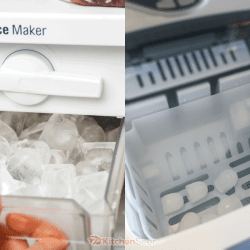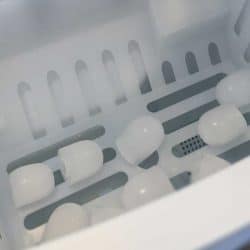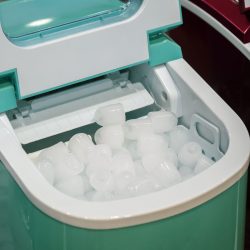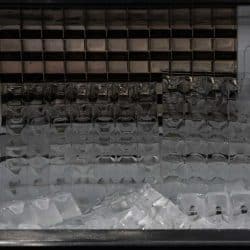Meal and snack times aren't the same when your portable ice maker is not getting cold and suddenly stops making ice. If you don't know what to do about a portable ice maker that doesn't get cold, don't worry—the problem isn't complicated. We researched the issue to help you solve the problem when it happens.
If your portable ice maker is not getting cold, one of these issues is most likely to be the root of the problem:
- Dirt or another obstruction is blocking the heat output. Clean the air inlet and outlet.
- The water reservoir temperature is extremely high. Fill the tank with colder or room-temperature water.
- The room temperature is too warm. Move the unit to an area with moderate temperature.
- The refrigerant is leaking. Call a technician to fix the appliance.
There are numerous brands of handy ice makers available on the market. However, most of them share the same basic components. Continue reading for more tips on resolving problems with your portable ice maker so it functions properly.
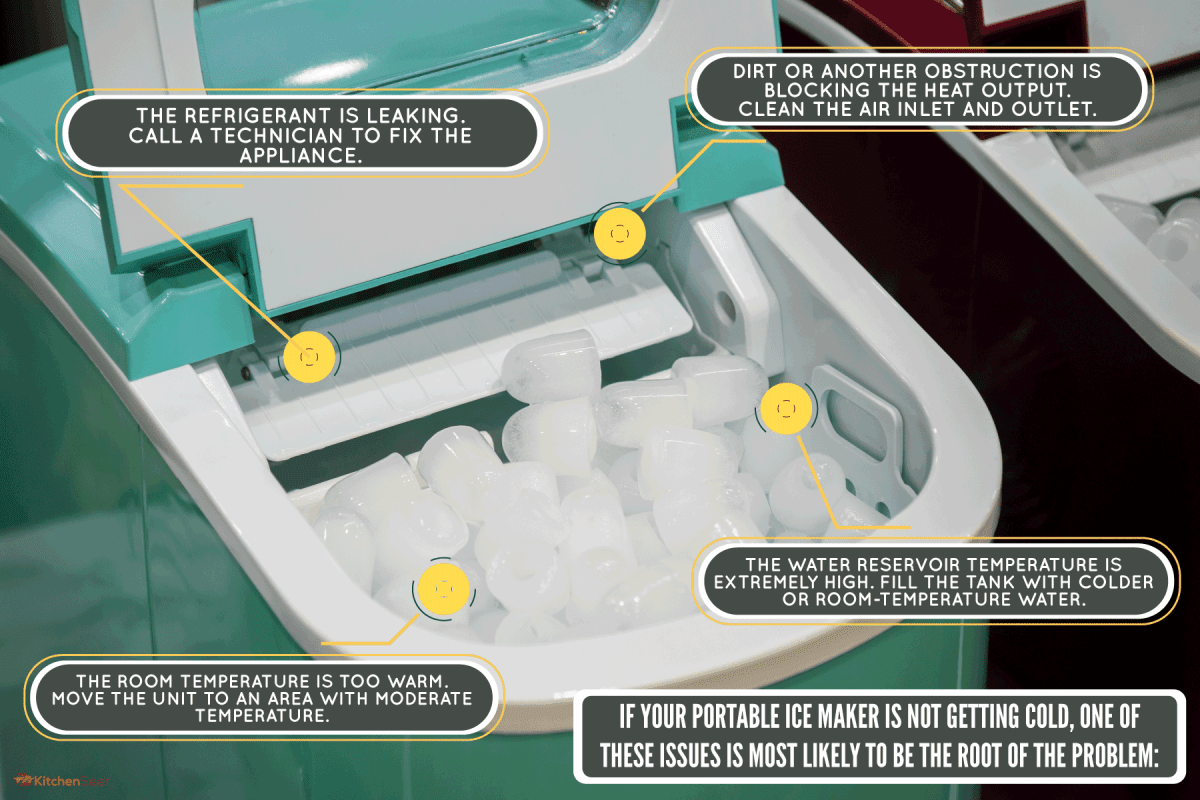
How Do Portable Ice Makers Work?
The best portable ice makers have a great design that eliminates the need for water lines or drainage hoses. Since all you need to start making ice is a power outlet and some water, this design makes them completely portable.
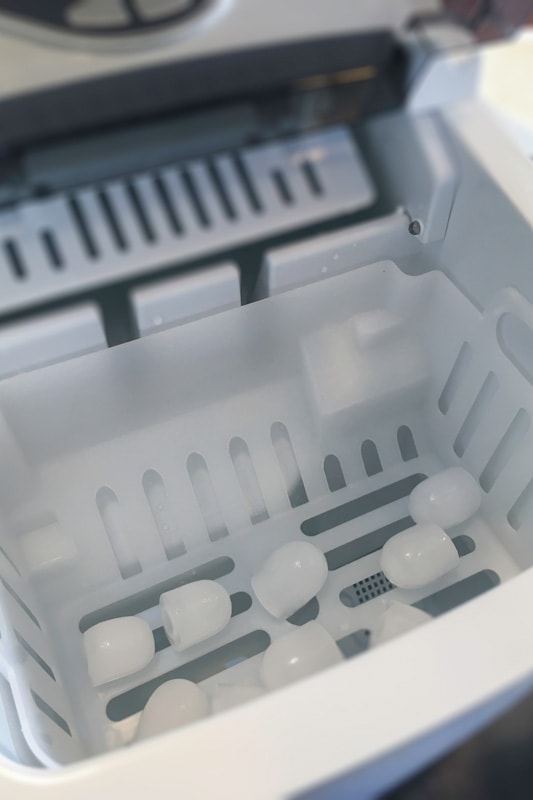
Most portable ice makers create ice in the shape of bullets, but some make it in the form of clear, cubed, or nugget ice. You might wonder how these refreshments essentials are made. It’s not complicated.
- The reservoir is filled with water. Since it is not fixed, the water is filled manually by most handy ice-making machines.
- The water is then pumped into the ice tray, where unique prongs are dipped. Most machines use a two-inch Freon point and make it very cold by using a refrigeration system to produce ice.
- The water starts to freeze at these prongs, forming small ice pieces. The longer the dipping time, the bigger the ice cubes can be.
- After forming the ice cubes to the desired size, the remaining water is drained from the tray back to the reservoir, and the prongs heat up a little to drop the ice. Then a small paddle pushes the cubes into the ice bucket. The sensors and timers are installed for automation to guide the ice-making process at the right time.
- Most ice makers stop producing ice and shut down when there is enough in the container. Water from the melted ice drips back into the reservoir.

Why Is My Portable Ice Machine Not Getting Cold?
Now that you know how ice is made with a portable ice maker, you can at least diagnose your machine if it suddenly stops getting cold. If it happens, one of these issues is likely to cause it.
Dirt Or Another Obstruction Is Blocking The Heat Output
Clean the air inlet and outlet. There should be about eight inches of clear space between the air inlet or outlet and any walls or adjacent objects. The appropriate action is to give your ice machine a thorough cleaning.
The Water Reservoir Temperature Is Extremely High
Add colder or room-temperature water to the reservoir. High water temperature may affect the cooling mechanism of the appliance.
The Room Temperature Is Too Warm
Portable ice makers are made to operate at room temperature, and your ice will melt before you can enjoy it if a room is too warm.
If this is the issue, you should relocate your ice maker to a space with a cooler temperature of at least 41°F. Also, keep it out of direct sunlight.
The Refrigerant Is Leaking
Unfortunately, you cannot resolve this on your own. Also, exposure to refrigerant or Freon leaks may negatively affect a person's health, depending on the intensity of exposure. So it is better to have a specialist inspect the ice maker.
Buy this portable ice maker machine on Amazon.
Why Did My Portable Ice Maker Stop Working?
One of the most frequent issues individuals run into is their ice maker not producing any ice. Because of this, it's crucial to examine your ice maker as soon as there's a problem. In the long run, it might save you time and money.
The possible causes might be the following:
The Ice Maker Is Not Plugged In
Check the power connection first if the ice maker suddenly stops working. It's possible that the plug was accidentally pulled out or there might be a broken power supply. Even though it may seem apparent, ensure the ice machine switch is on.
No Water Getting Into The Ice Tray
The pump, a clogged water line on the ice maker's base, or calcium buildup could all be blamed for this. The first course of action should be a thorough cleaning of the machine.
Next, make sure it isn't plugged by checking the water intake valve or the small hole at the bottom of the water reservoir to see if there are any obstructions.
Confirm that there is water in the dish. If there isn't any water in the tray, you can assume a blockage is preventing the water from flowing. Check also for its water level or a damaged water pump.
Try this Nu-Calgon ice machine cleaner on Amazon.
Ice Bucket Is Full
Most portable ice producers contain a sensor that detects when to produce ice. The ice maker will stop making ice cubes if the ice bucket is full, and you must remove the ice in the ice bucket for the machine to produce more.
The ice maker will notice and produce more ice cubes when the ice bucket is empty. If its sensor malfunctions, the ice maker will make too much ice.
After doing all the troubleshooting on your machine, if you find it still doesn't work, you may need to call for replacement. You have to consider a lot of factors when buying a new one.
How Long Does It Take For An Ice Maker To Make Ice?
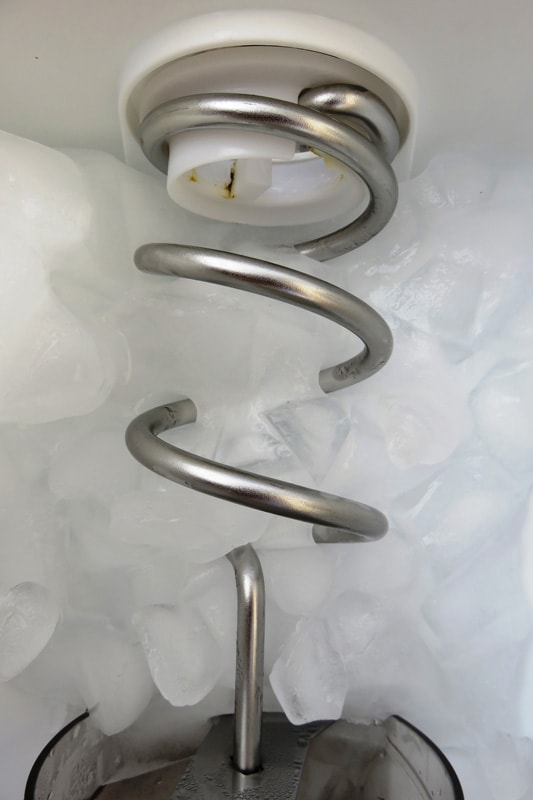
The time it takes to freeze and discharge a single batch of ice into the storage bucket of the portable ice maker can range from seven to 15 minutes and produce up to 35 lbs. Most bins can store up to two lbs. of ice.
How Do You Reset A Portable Ice Maker?
Check your portable ice maker's manual to see if the device includes a manual reset button. Some appliances come with built-in fuses or breakers, and if a fuse burns out or it trips, this breaker will need a reset.
Can I Leave My Portable Ice Maker On All The Time?
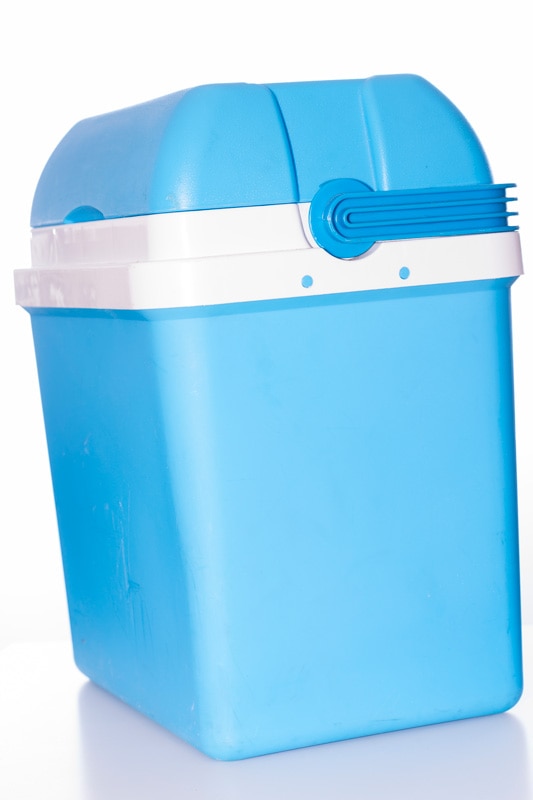
Portable ice machines are made to run continuously. The water from the ice bucket drips back into the tank as it melts to create another batch of ice.
Even though your ice maker can run constantly, you shouldn't let it continue to operate on low water for optimal work. The water pump will have to work harder than necessary, as a result.
Although some portable ice makers are designed to shut off when the water reservoir is empty, it is still better to ensure that it has enough water.
How Do I Know If My Ice Maker Water Inlet Valve Is Bad?
You will know that you have water inlet valve problems when small ice cubes or a single solid piece of ice may be present instead of separate cubes.
Additionally, the ice maker may stop functioning. These are indicators of a broken water valve that calls for repair.
Final Thoughts
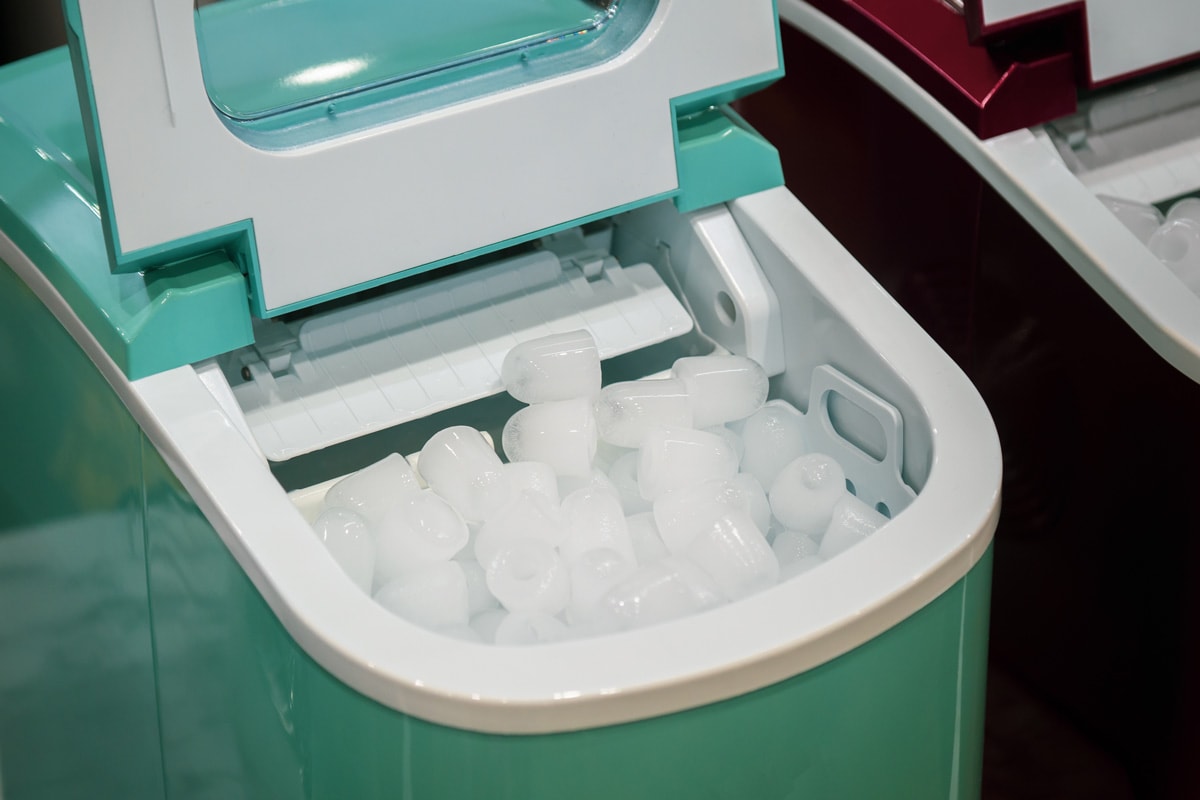
Your portable ice maker can stop getting cold for several different reasons. You should troubleshoot your equipment to identify the problem and take the necessary action.
Check for leaks and bad connections. You should also check the water supply and the amount of ice, and give the appliance a thorough cleaning.
If you found this post helpful, you might want to read these articles too:
How To Clean A Portable Countertop Ice Maker
3 Types Of Ice Makers And Machines
Frigidaire Countertop Ice Maker Troubleshooting Guide



![close up photo of a portable-mini-ice-cube-maker many ice cubes green colored ice maker portable, Should You Turn Off Your Portable Ice Maker [Or Can You Leave It On All The Time]?](https://kitchenseer.com/wp-content/uploads/2022/09/close-up-photo-of-a-portable-mini-ice-cube-maker-many-ice-cubes-green-colored-ice-maker-portable-250x250.jpg)
